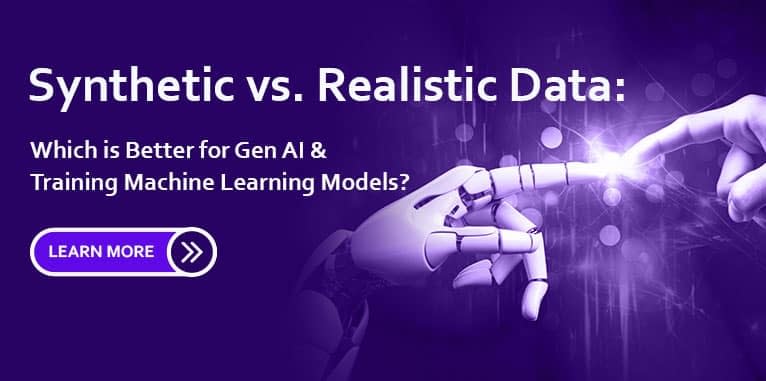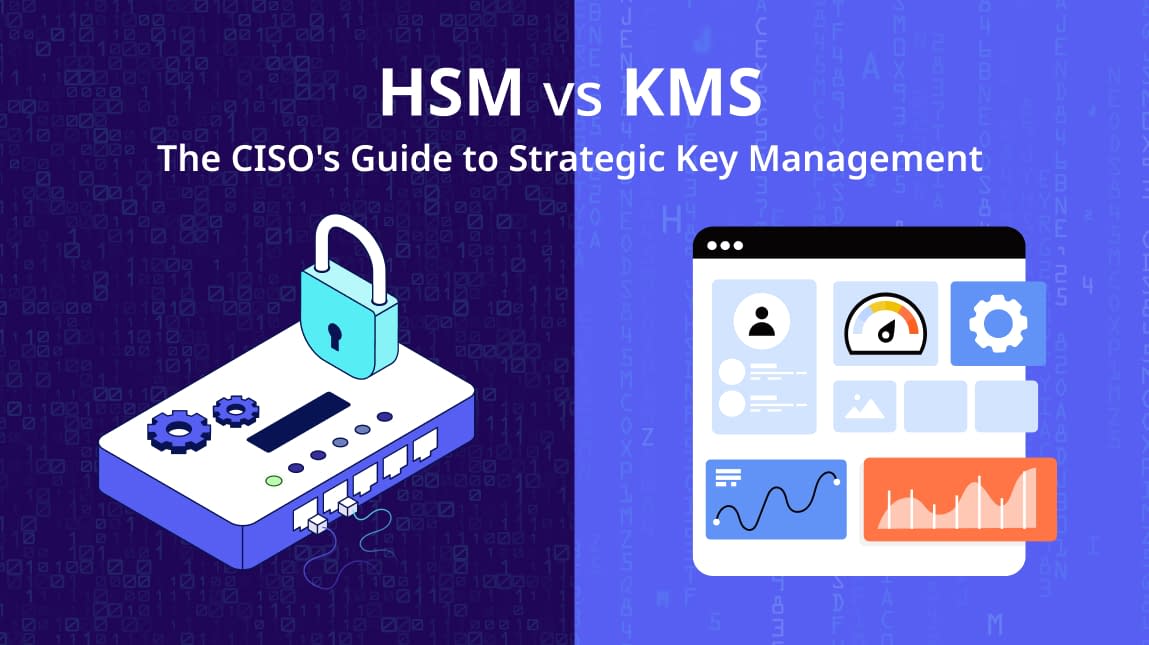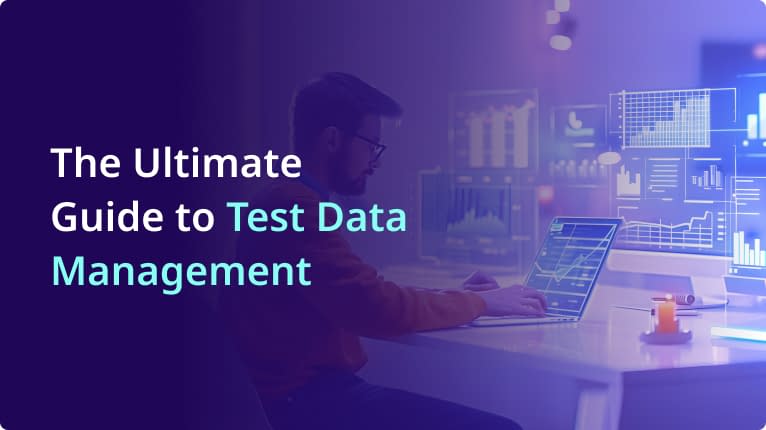How are you training your generative AI models?
In AI and machine learning (AI-ML), the type of data you choose can make or break your model’s performance. Whether you opt for real production data, synthetic data, or masked data, each choice has its unique impact on your model’s accuracy and effectiveness. This article dives into the implications of each data type, their specific use cases, and how to choose the best one. By the end, you’ll have a clear understanding of the strengths and trade-offs of each data type and know how to use them to achieve optimal AI-ML results.
The Power of Real Data
Real data is often seen as the gold standard for AI-ML modeling because it reflects genuine patterns and relationships. When models train on raw data, they can learn with high accuracy, leading to reliable predictions. However, using production data comes with significant risks.
Challenges with Production Data:
- Security Risks: Handling raw data can expose sensitive information, making it vulnerable to breaches. It’s essential to implement strong security measures to protect this data.
- Compliance Risks: Complying with regulations like GDPR, HIPAA, PIPEDA, and CCPA is complex. Feeding personally identifiable information (PII) into AI models could lead to non-compliance, resulting in penalties and damage to your reputation.
When to Use Production Data:
Real data is ideal when privacy concerns are minimal, such as when working with operational metrics or public datasets where comprehensive insights are crucial.
Example:
A manufacturing company developing a predictive maintenance model for its machinery uses real operational data, including performance metrics and historical maintenance records. This enables the model to accurately predict potential equipment failures and optimize maintenance schedules, improving operational efficiency and reducing downtime.
The Rise of AI Synthetic Data Generators
To address privacy concerns, AI synthetic data generators have gained popularity. These tools use algorithms to create synthetic data that mimics real-world scenarios, offering a practical alternative to actual data. Generative Adversarial Networks (GANs), for instance, produce data that’s often indistinguishable from raw data.
While synthetic data provides a valuable alternative to real data, it comes with its own set of challenges. One significant issue is the difficulty in replicating the rich, relational structure found in real-world datasets.
Despite these advantages, synthetic data is not without its challenges. One major issue is replicating the rich, relational structure inherent in real-world datasets. Akash Srivastava, synthetic data lead at IBM Research, aptly describes this core challenge: “The biggest problem we’re trying to solve is how to recreate highly structured, relational datasets with privacy guarantees. Most machine-learning models treat data points as independent, but tabular data is full of relationships.” Read full article here. This insight underscores the difficulty in capturing the intricate relationships in tabular data, which is essential for robust AI-ML modeling.
Limitations of Synthetic Data:
Despite its benefits, synthetic data has several limitations:
- Lack of Nuance: Synthetic data often fails to capture rare and complex patterns present in real data. For example, a synthetic dataset for retail customer behavior might not identify unique shopping habits, leading to less effective anomaly detection models.
- Lack of Realism: The inherent simplicity of synthetic data means it may not fully replicate real-world complexities. This can cause issues, such as a predictive maintenance model trained on synthetic data struggling with unexpected machinery failures due to limited variability.
- Generalization Issues: Models trained on synthetic data might underperform when applied to real-world scenarios. For instance, a customer service model trained on synthetic interactions might find it difficult to handle genuine, unpredictable queries.
When to Use Synthetic Data:
Synthetic data is best suited for testing basic trends, especially during the early stages of development, where the complexity of raw data isn’t critical.
Example:
A startup creating a new mobile app with basic user analytics features uses synthetic data to simulate user interactions and test the app’s basic functionality and performance. Since the app is in its initial stages and doesn’t require handling rare or complex user behaviors, synthetic data is sufficient for preliminary testing and development.
The Ideal Alternative: Realistic Anonymized Data (Masked Production Data)
Masked production data offers a practical middle ground between using raw data and synthetic data. This method involves transforming actual production data into non-sensitive formats through data masking techniques. Static data masking solutions, including Accutive’s Data Discovery and Data Masking (ADM), employ advanced techniques to mask sensitive data but preserve the characteristics and attributes of real data. ADM will generate smart addresses, employer name with matching email, date of birth, and SSNs that align with the original raw data.
For example, the data for a plumber who lives in Indianapolis, IN can be masked with a fictitious plumbing company name generated as his employer, have a nearby fictitious address with a similar zip code, and have a different date of birth within the same demographic age band. The result is data that retains the structural and statistical properties of the original data while protecting sensitive information.
Advantages of Realistic Data:
- Realism:
Masked data mirrors real-world conditions, helping models accurately anticipate real-world scenarios. For example, using masked machine operational data improves predictive maintenance models - Relevance:
Masked data is pertinent to the problem at hand. In healthcare, masked patient histories enable the development of effective disease management models. - Completeness:
Masked data includes all relevant factors, ensuring comprehensive learning. For predicting loan defaults, a complete financial profile is crucial for robust predictions.
When to Use Realistic Data:
This data type is ideal for projects involving sensitive information, such as customer data in financial services, where privacy is crucial, but accurate, realistic modeling is necessary.
Example:
A financial institution developing a risk assessment model for loan approvals uses masked production data from its customer databases. This ensures sensitive information is protected while maintaining the original data’s patterns and relationships. This approach allows the institution to train a robust model that reflects real-world conditions while adhering to privacy regulations.
Criteria for Choosing Data Types
How ADM Generates Safe and Realistic Data
For those looking to balance data realism with privacy, Accutive’s Data Discovery and Masking (ADM) Platform is the ideal solution.
The ADM masking platform carefully transforms sensitive data into formats that maintain its practical value for AI and machine learning while keeping it secure. This means you can work with data that closely mirrors real-world conditions without compromising on privacy. Companies using ADM ensure that their models remain effective and reliable, even as they adhere to important data protection standards. Companies using ADM ensure that their models remain effective and reliable, even as they adhere to important data protection standards.
In Conclusion
While raw data often provides the most accurate insights for AI-ML modeling, masked data offers a valuable alternative by combining realism with privacy. ADM’s advanced masking solutions enable organizations to achieve high-quality data and maintain compliance, leading to more reliable and effective AI-ML models.













Comment